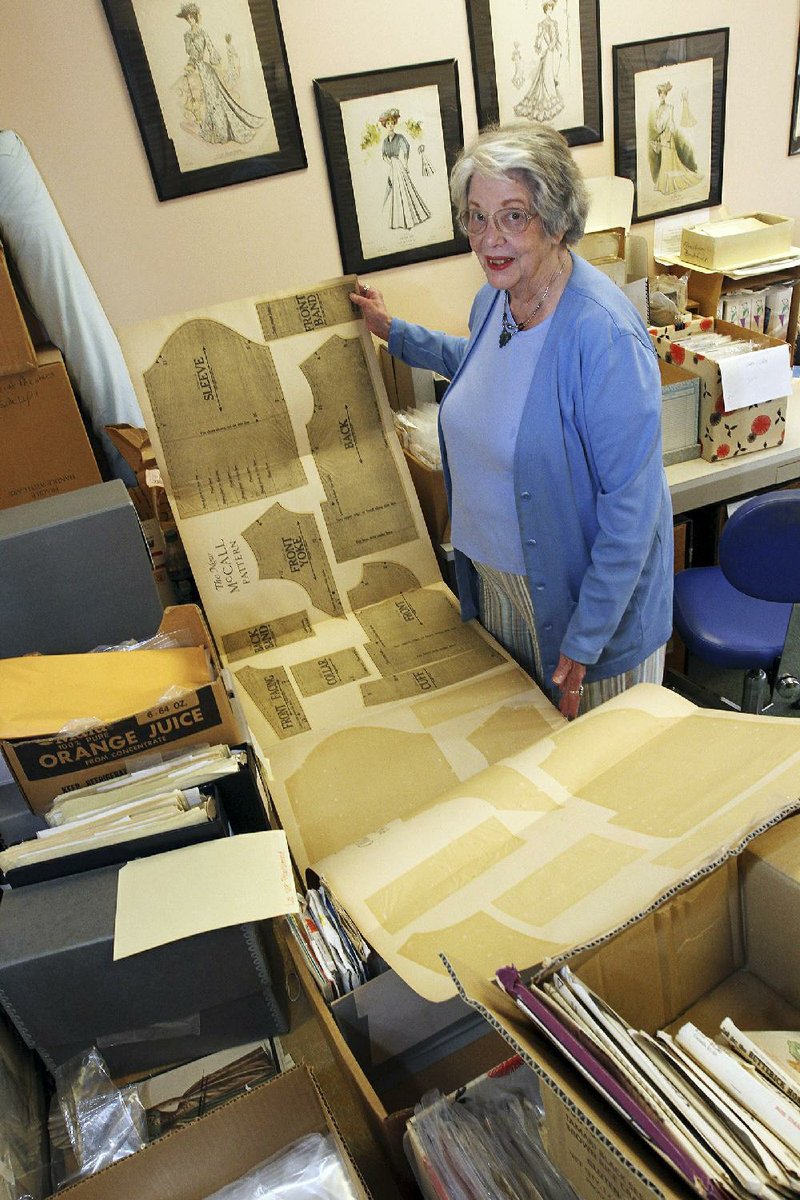SOUTH KINGSTOWN, R.I. -- If a costume designer wanted to re-create a World War I-era wraparound dress, a 1940s zoot suit or even a bodice from 1875, the sewing patterns are in Rhode Island.
The University of Rhode Island has the largest known collection of sewing patterns in the world, says the collection's curator, Joy Spanabel Emery, and the U.S. Institute for Theatre Technology.
About 50,000 are on paper and 62,000 are in an electronic database. They're at the university because of Emery's love of patterns.
Emery donated her collection of patterns and periodicals to the university years ago and has painstakingly sorted through the donations sent there as word spread about the growing repository. Three more boxes full just arrived to be added to the overflowing filing cabinets.
"This is much more than a hobby. It really is a passion," said Emery, a professor emerita of theater at URI. "I'm learning things every day about pattern companies and the different styles, and I enjoy creating something that's a legacy."
As a costume designer, Emery began saving paper patterns in the 1980s because everyday clothes often aren't preserved over time. Notable pieces like military uniforms and wedding dresses tend to be saved. And, she worried electronic versions of the patterns could be lost as technology changed.
The association for performing arts and entertainment professionals, USITT, honored Emery in 2016 for documenting the clothing of American history. The 80-year-old Emery received a distinguished achievement award in costume design and technology, the only one given in 2016 in that category.
Costume designers can replicate period clothing and the public can understand how middle-class Americans dressed over time because of Emery, said executive director David Grindle.
"The archive is unique to her," he said. "No one else has done this kind of work."
Emery finds the patterns from the 1930s the most interesting because they're elegant and inventive despite the fact they were designed during the Depression. She's also intrigued by the World War I dress, the "Hoover apron." Women wore it when Herbert Hoover promoted food conservation by encouraging Americans to grow vegetable gardens.
The oldest patterns in the collection are from 1847, including a peignoir and a baby cap. The database can be used to trace the evolution of clothing and re-occurrence of trends.
Emery was inspired to collect patterns by her friend, Betty Williams, a theatrical costume maker in New York and pioneer in dressmaker pattern research.
When Williams died 20 years ago, her 12,000 patterns, periodicals and research papers were donated to URI. The Butterick pattern company's archives are also at the university. Rhode Island has a strong history with the textile industry, fashion and theater.
Emery wrote a history of the paper pattern industry that was published in 2014. She gets inquiries from all over the world from people doing clothing research.
"It's very rewarding," she said. "I just love to see the collection growing to a point where we have enough for it to really be worthwhile for significant research."
Style on 01/08/2017

